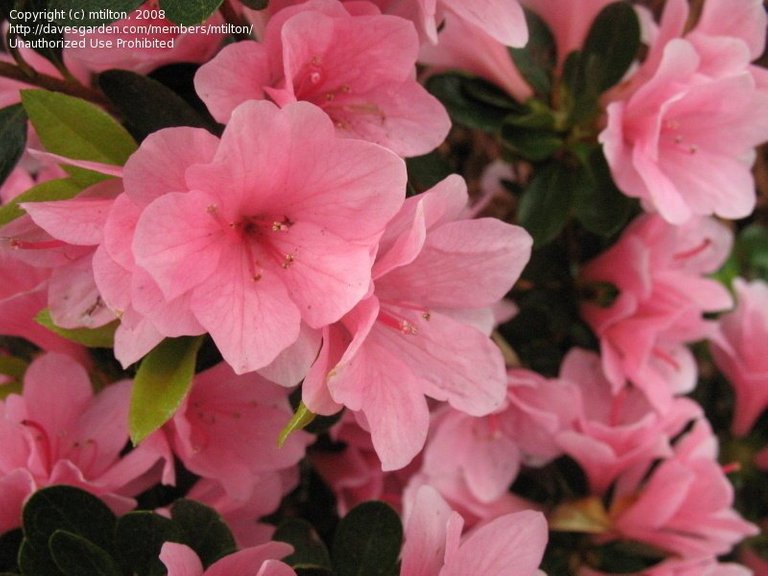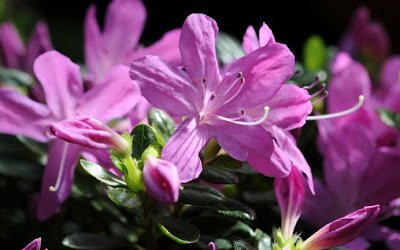
Azaleas /əˈzeɪliə/ are flowering shrubs in the genus Rhododendron, particularly the former sections Tsutsuji (evergreen) and Pentanthera (deciduous). Azaleas bloom in spring.

Plant enthusiasts have selectively bred azaleas for hundreds of years. This human selection has produced over 10,000 different cultivars which are propagated by cuttings.[citation needed] Azalea seeds can also be collected and germinated.
Azaleas are generally slow-growing and do best in well-drained acidic soil (4.5–6.0 pH).[1] Fertilizer needs are low. Some species need regular pruning.
Azaleas are native to several continents including Asia, Europe and North America. They are planted abundantly as ornamentals in the southeastern US, southern Asia, and parts of southwest Europe.

A George Taber azalea
According to azalea historian Fred Galle, in the United States, Azalea indica (in this case, the group of plants called Southern indicas) was first introduced to the outdoor landscape in the 1830s at the rice plantation Magnolia-on-the-Ashley in Charleston, South Carolina. From Philadelphia, where they were grown only in greenhouses, John Grimke Drayton (Magnolia's owner) imported the plants for use in his estate garden. With encouragement from Charles Sprague Sargent from Harvard's Arnold Arboretum, Magnolia Gardens was opened to the public in 1871, following the American Civil War. Magnolia is one of the oldest public gardens in America. Since the late 19th century, in late March and early April, thousands visit to see the azaleas bloom in their full glory.

Azalea
Azaleas are flowering shrubs in the genus Rhododendron, particularly the former sections Tsutsuji (evergreen) and Pentanthera (deciduous). Azaleas bloom in spring, their flowers often lasting several weeks. Shade tolerant, they prefer living near or under trees. They are part of the family Ericaceae.